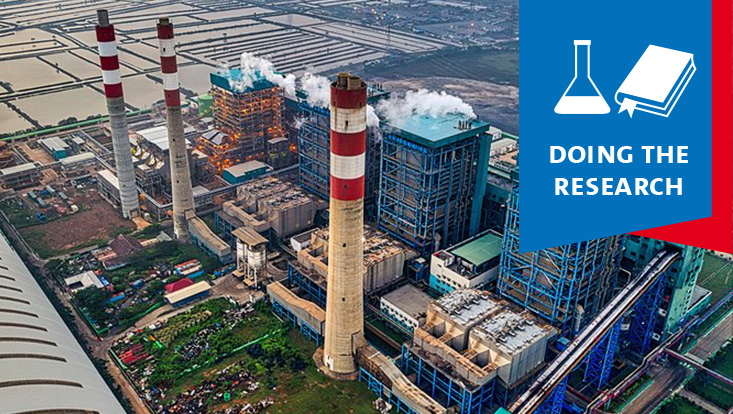Planning reliability through stochastic optimizationNew Model Helps Heavy Industry in Energy TransitionDoing the Research series
29 August 2024, by Anna Priebe

Photo: Pexels/Tom Fisk
More green energy, fewer emissions: to stand a chance in the fight against climate change, heavy industry must change its production methods. But this carries high investments and risks. Working with Prof. Dr. Malte Fliedner, Dr. Tobias Cors from the Faculty of Business Administration has developed a mathematical optimization model to plan cost-efficient complex plant systems. He explains in an interview how this helps the energy transition.
What makes the energy transition in heavy industry so challenging?
Heavy industry includes sectors such as chemicals, aluminum, steel, and cement. These industries are not only extremely energy-intensive, but are also among the biggest producers of CO₂ emissions. In order to become climate-neutral, their plant systems must be fundamentally transformed, i.e. converted to hydrogen as an energy source or converted in such a way that emitted carbon is captured and reused. However this conversion requires considerable financial investments which carry a high degree of planning uncertainty: even minor deviations from optimum system configuration, dimensions, or operating strategy can lead to considerable financial losses.

And this is where your project comes in?
In my research project, I am developing a new stochastic model that allows companies to design and operate their green hydrogen and carbon value chains in the best possible way. Stochastics, the mathematical study of random processes and probabilities, plays a crucial role in optimizing the technical and economic planning of industrial plants by incorporating uncertainties into mathematical models.
This is particularly relevant for large industrial decarbonization projects, where investments are high and planning is complex. Optimization is intended to make the energy transition and the transformation of the industry feasible, both technically and economically.
What methods do you use in your research?
I have developed a flexible stochastic modeling and optimization framework for multi-medium multi-energy systems based on network flow modeling. In concrete terms, this means that companies can use my program to precisely map energy and mass flows as well as the technical processes within their system.
The key advancement lies in the development of new methods for linear approximation of diverse technical relationships, combined with a two-stage stochastic optimization approach. In this way, the model provides high quality technical and economic mapping of systems in an acceptable computing time.
At the same time, comprehensive consideration is also given to uncertainties regarding future demand volumes, changing market prices or fluctuating electricity production from renewable energies. This allows probability distributions to be generated for all relevant key figures and costs. Sensitivity analyses enable us to identify economically acceptable risk. In addition, the application can help decision-makers to holistically evaluate systems and business models.
Do you have a specific example of the application?
We have worked on a research collaboration with the Westküste100 project, a flagship project of the Federal Ministry for Economic Affairs and Climate Action. Here we used our model in practice to plan the capacities and operating strategies for a system consisting of an offshore wind farm, a photovoltaic park, systems for electrolysis and methanol synthesis, carbon dioxide capture in a cement plant and a refinery, and storage facilities for hydrogen, oxygen and carbon dioxide.
At its core, green electricity will be used to generate green hydrogen, which in turn will be synthesized with industrially captured carbon dioxide to produce methanol, which can be used directly as a fuel in shipping or processed further. The central question was how large all the system components had to be and how they should work together so that the overall system could be operated in a robust and cost-optimized manner. The stochasticity of renewable electricity production plays a decisive role here, as the entire system is exposed to it. The result showed considerable savings potential with optimized risk management, including a 24.3 percent reduction in the average cost of methanol over the lifetime of the plant network.
So, it looks like the program is ready for use. What are the next steps?
The results of my research will initially be published in scientific articles and will also be used in other projects and areas, such as integrated energy and production planning in energy-intensive industries. Companies interested in working with me or using these methods are welcome to contact me.
Doing the Research
There are approximately 6,200 academics conducting research at 8 faculties at the University of Hamburg. Many students also often apply their newly acquired knowledge to research practice while still completing their studies. The Doing the Research series outlines the broad and diverse range of the research landscape, and provides a more detailed introduction of individual projects. Feel free to send any questions and suggestions to the Newsroom editorial office.


